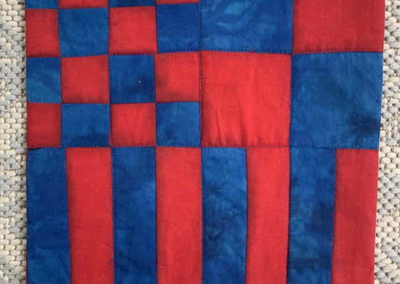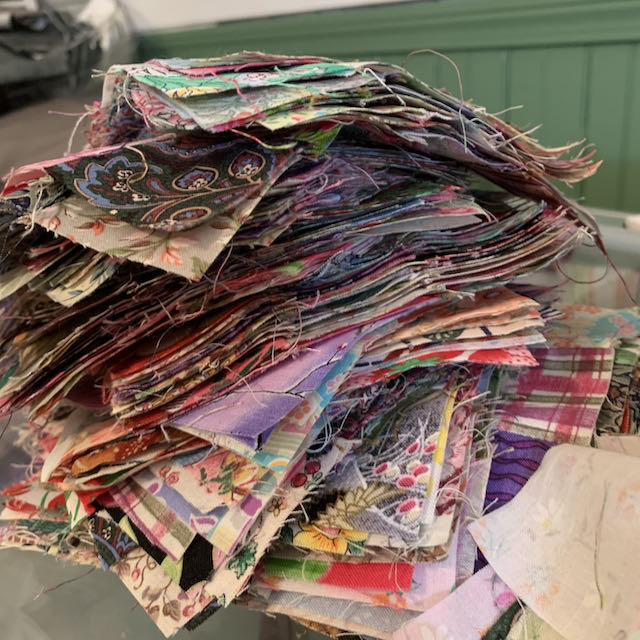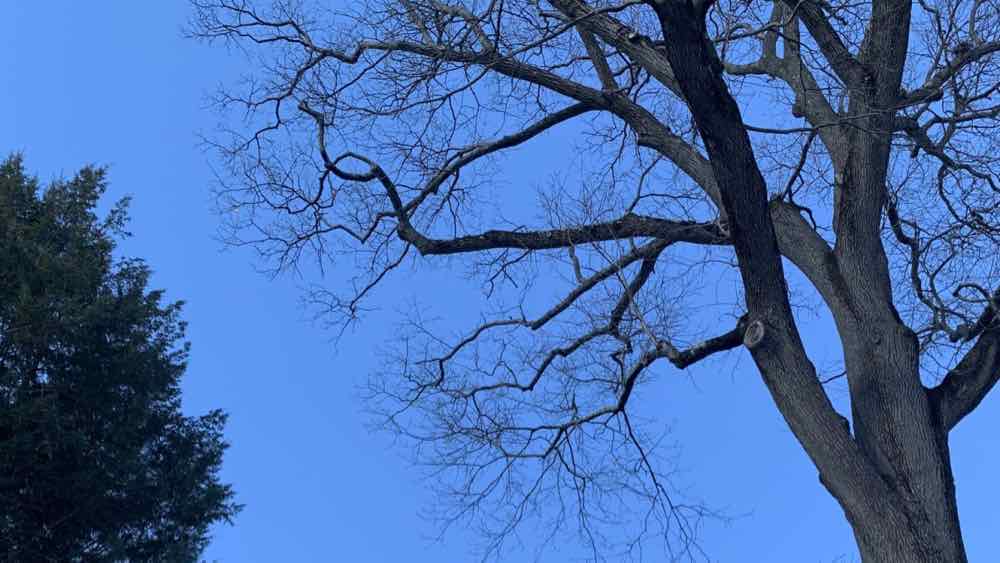In our house, she was known as the “Closet Lady.”
Nearly a decade ago, she found me through the grapevine. I repaired and recreated textiles. Her silk Roman shades needed mending, suffering sun damage. She insisted that the repairs happen without uninstalling shades. I could adapt, no problem.
Thus began five years of journeys to her meticulously decorated home. I would sew, repair, reweave and piece together the silk textiles carefully chosen to coordinate with the furniture, paintings and other decorative elements.
We set appointments on the phone, from her land line only. I introduced her to the pleasures of a smartphone. She promptly purchased one, but I never saw her use it.
How did Closet Lady acquire her moniker? In her front entry, the coat closet had a door. When you opened it, there was a large gold French passamenterie gold tassel at the end of the light pull. It looked out of place with the wooden hangarars and neatly stacked cloth covered storage boxes on the shelf above. She purchased smocked gold dupioni silk to make a curtain that created a backdrop for the tassel. When she opened the closet door and pulled the tassel light cord, the closet glimmered.”It gives me great pleasure to take my guests’ coats and jackets and keep them in a gracious location,” she mused after I installed the curtain.
Like me, silk and wool were irresistible to her. Silk curtains, silk shades, silk duvet covers, wool paisley jacquard weave upholstery adorned windows, archairs, piano stools. She had worked with a designer to decorate the home when she first purchased it, but clearly she was in charge of the project. To find the exact colors, textures and patterns was a grueling process and she had no desire to do it again.
All repairs happened at her home. Packing up my tool bag, I curated a selection of threads in a range of weights and fibers that reflected the home’s palette. Pearl cottons, silk, wool and cotton embroidery threads, buttonhole thread plus machine and hand sewing threads were neatly lined up in a box. A daylight lamp and sewing machine often traveled with me. Normally, it was a four hour stint at her place.
Of course I should stay for lunch! Dainty dishes, cloth napkins and vintage flatware elevated the deli salad as we discussed Museum exhibits, current affairs and political escapades. A stickler for grammar, she would frequently bemoan errors she heard on NPR or in the New York Times. These lapses were not just noted, but reported to the perpetrator. My conversational contributions were subject to the same scrutiny.
While eschewing my grammatical errors, she would bring her writing to me for analysis, ever searching for the perfect word and tone. I suggested synonyms and phrasing options for her correspondence. Mind you, this was included in my $35/hr textile tech charges. She encouraged me to charge my editorial hourly rate, but I never did.
Sections of the textiles most beloved to her had more reweaving than original fabric. Did she really want to sink more hours into extending their fragile lives? My schedule was tighter, working deadlines on projects that paid better and were located closer to home. I gave her the number of a great upholstery business that could recover a few of her chairs when she found the right replacement fabric.
We exchanged holiday cards. On occasion, we would send each other newspaper clippings.
In the summer of 2019, she sent me a letter asking me to please come, as her textiles needed me. She would gladly pay my time in transit and hoped I could fit a trip in as soon as possible. I felt split: this gig didn’t pay much, but her gracious hospitality and appreciation for our time together put this offer in a different light.
I responded that could get there in the fall. If she wanted to drive or have them delivered to me, I would work on them gradually. That summer was so busy, it didn’t occur to me until I wrote her 2020 New Year’s card that she hadn’t responded.
In February 2021, my New Year’s card to her returned to me. “Unoccupied” was scrawled across the envelope.
Discreet as she was, traces of her personal life on the internet are nondescript and few. Deep in a pdf newsletter of Boston club, there was reference to her death. While the exact date wasn’t listed, late summer 2019 is probable.
Knowing that she had no children and her nephew was the closest family member she mentioned, I wonder what happened to her carefully curated home. What about that gold silk smocked curtain? Those gorgeous tassels that she enjoyed every day?
I am grateful to have known her.















